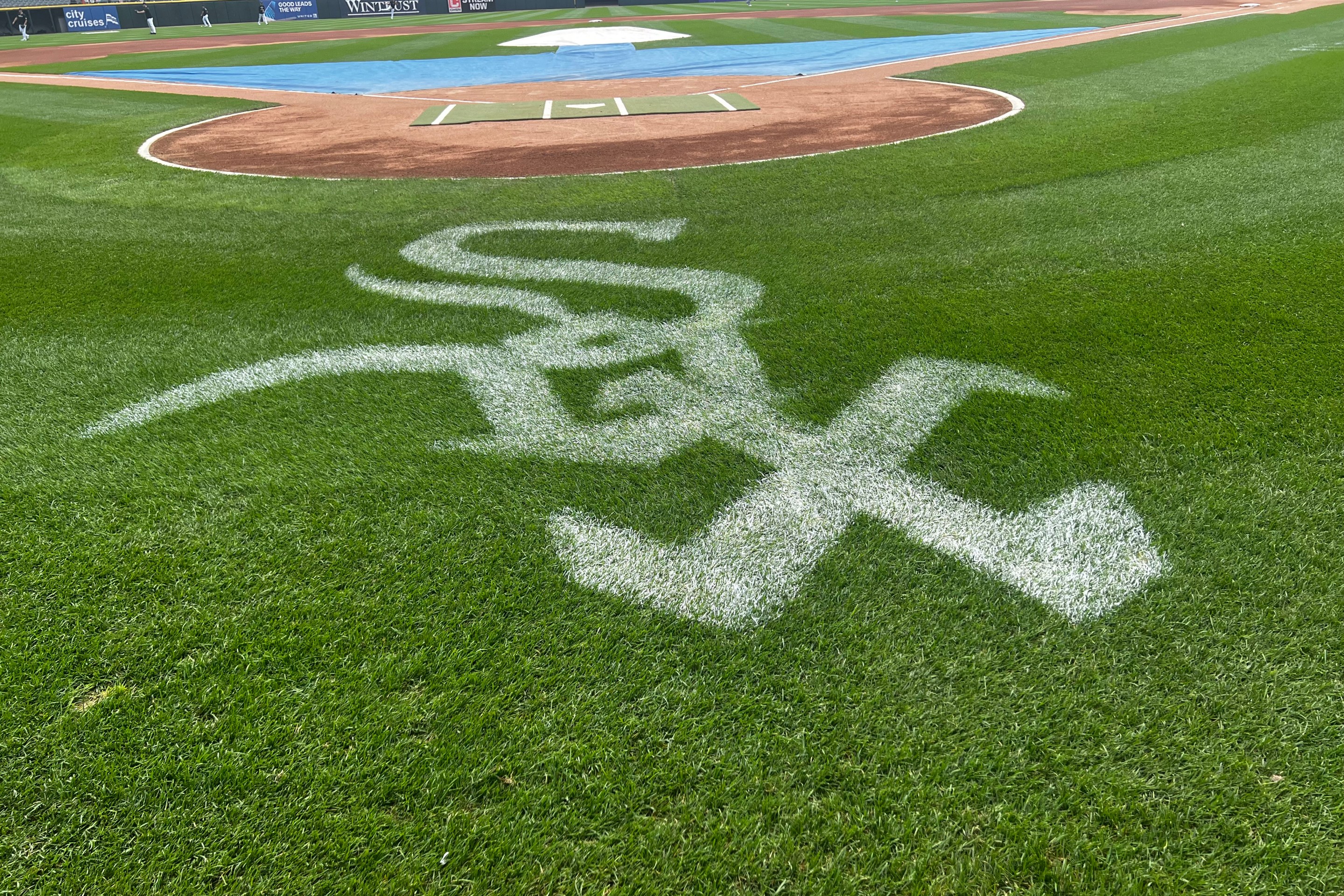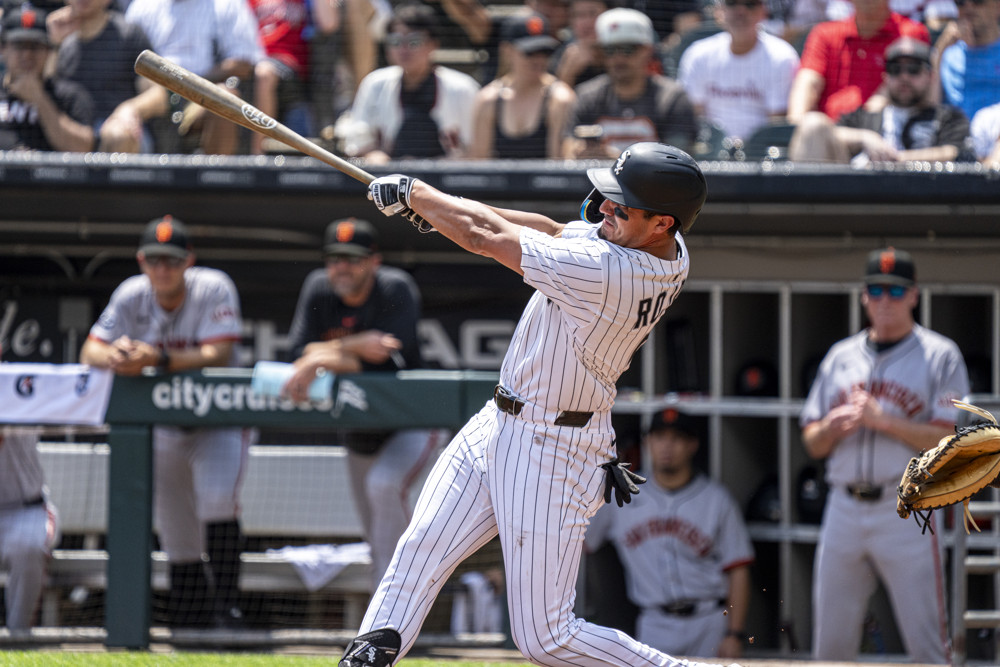If you subscribed to the idea that Dylan Cease's market is Blake Snell's market and vice versa, then it's hard to imagine Chris Getz doing levels better than he did trading Cease to San Diego, because it's Pi Day, and Cease has a new team. Snell doesn't.
That's cold comfort, but it's fair to question whether warm comfort is possible in this post-apocalyptic hellscape the White Sox inhabit.
After all, the White Sox intentionally tore it all down for a three-year cycle of losing after the 2016 season, and they bottomed out at 100 losses. This White Sox team is coming off a 101-loss season that was somehow supposed to represent Rick Hahn and Kenny Williams trying to their best to contend, and now Vegas has them losing another 101 because nobody knows exactly how they're going to prevent runs or score them. Ethan Salas was never walking through that door, but even if he did, White Sox fans would merely ask him if he brought any friends.
The failure of the previous rebuild killed any goodwill that Getz could generate with this trade. Getz did his own part by taking his time articulating his own vision for the future. He couldn't bring himself to use the "R" word, and he was slow to express himself through transactions, too. Here's the chronology of players acquired this offseason, with years of team control in parentheses:
- Michael Soroka (1)
- Nicky Lopez (2)
- Jared Shuster (6)
- Braden Shewmake (6)
- Riley Gowens (6+)
- Paul DeJong (1)-- DECEMBER --
- Max Stassi (1)
- Erick Fedde (2)
- Tim Hill (1)
- Chris Flexen (1)-- JANUARY --
- Martín Maldonado (1)
- John Brebbia (1)-- FEBRUARY --
- Prelander Berroa (6)
- Zach DeLoach (6+)
- Dominic Fletcher (6)-- MARCH --
- Drew Thorpe (6+)
- Jairo Iriarte (6+)
- Samuel Zavala (6+)
- Steven Wilson (4)
By spending the first few months of the winter acquiring pitchers whose run-prevention numbers might benefit from the addition of position players who couldn't hit, Getz seemed to be building a roster that could get the 2024 season over with as quickly as possible. By delaying any moves of consequence, he didn't provide a real vision of what might come after.
The last White Sox rebuild expressed such ambitions quicker. After the 2016 season, Hahn traded Chris Sale and Adam Eaton at the winter meetings and issued public updates on the state of his druthers, while Getz needed until February to acquire the first players who might be around for the next good White Sox team.
That's not to say that Getz was wrong for waiting, but he suffered from the false advertising of others. Jerry Reinsdorf hired Getz without a process because he said didn't have a year to waste. When asked last September about whether the White Sox would contend, Pedro Grifol responded, "Why wouldn't we be able to?" No right-minded people saw what they purported to see, but whether you're cynical and right or optimistic and wrong, you're not likely to be satisfied in either case.
Set aside all the scar tissue, and it's ultimately a good thing that Getz didn't see a winner, because it showed that he was sane. His first objective was to remain that way. His second objective was to surround himself with more sane people who could help him figure a different way out of the mess. Then they had to acquire players who only require standard developmental fortune to succeed, and surround them with standard developers. All steps are easier said than done.
But THE move finally happened, and now we can better understand everything else about this franchise that's undergoing an overhaul.
The leaguewide response that James fielded about Drew Thorpe, Jairo Iriarte and Samuel Zavala slotted neatly into the spectrum of reactions elsewhere, which ranged from "a little disappointing" to "pretty good." There's a polish-over-power guy in Thorpe, a power-over-polish guy in Iriarte, a teenaged upside play in Zavala, and a multi-inning reliever in Wilson that helps address a pressing shortage. The White Sox can't be accused of playing to a type with this haul.
There's going to be no immediate way to tell if these players will help, or if they'll have the help they need, but I can see the monster starting to lurch in that direction. The last rebuild started spectacularly, and ended as a spectacle. That doesn't mean the proper response is to open with disappointing trades and then step over the self-lowered bar -- although part of me wonders if the White Sox did just that by preceding the actual trade by leaking a less impressive idea with the Rangers. Like the South Loop ballpark proposal, one just has to accept that it's all renderings at this point. It turns out the devil's in the details, and the real parade is the players you made along the way.
At the close of the winter, I graded Getz's offseason a "D" because the vast majority of his moves simply kicked the can on any bigger, tougher decisions. It was replacement-level work, literally, figuratively, spiritually. However, I also stipulated that the offseason needed to be re-graded in the event of a Cease trade, because Getz shouldn't be held responsible if he had to adopt the pace of a slow-motion market.
With the Cease trade in the books, I'm inclined to bump up that grade one letter. I'd previously stated that Getz could call 2024 a success if it ends with a specific understanding of what -- and more importantly, who -- is needed in 2025, and it turns out that the Sox are holding themselves to the same standard. I can see what they're going for here. Actually seeing it through is on deck.
Fortunately, if we learned one thing from the past rebuild, it's that one big deal probably won't make or break a window. My sense is that this trade should help them toward better days, but if it doesn't, it's probably because a lot of other things the Sox are trying still aren't working.





